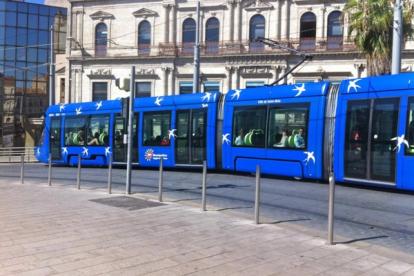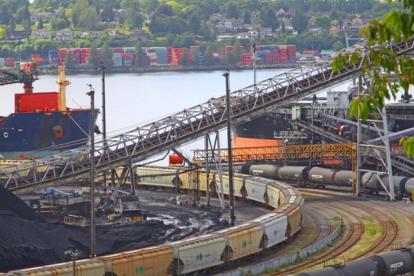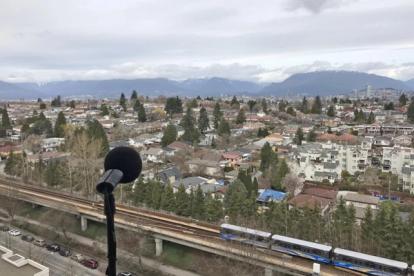
Australian Sustainability Reporting Standards: Where to start for Mandatory Climate Disclosures in 2025
by James Balik-Meacher, Anthony Carr
View post

Railways are an efficient and environmentally sustainable mode of transport. Transportation planning worldwide aims to create modal shifts to rail. At the same time, concerns around harmful effects of noise are increasing. Increasing population densities and traffic growth is causing complaints about noise from existing lines – with growth in rail traffic, what was once a bearable impact is increasingly severe. Effective policies are required to balance the adverse noise impacts against the benefits of railways to wider society.
The term “railway noise” encompasses noise from many different sources including rolling noise, curve squeal, aerodynamic noise, ground-borne noise, traction noise, warning signals and shunting noise. While almost all of these noise sources exist on railways worldwide, their relative importance varies considerably across different networks and geographies. Noise from diesel freight trains on a tightly curved branch line at 20km/h is very different in character to noise from light rail transit, or from an electrified high speed train at 350km/h.
Rolling noise is a key issue constraining railway growth in Europe and some parts of Asia. Rolling noise is often dominant in these areas, where typical mainline speeds being moderate to high. In these regions much of the traffic operates on electrified tracks with grade separated crossings, and curves have been eliminated as much as possible to enable high speeds. Elsewhere, rolling noise is present but other noise sources may be the dominant issue to be addressed. In locations with lower train speeds, small radius curves and level crossings other noise sources will be more important. These include wheel squeal around tight curves, traction noise, horn noise and freight train shunting noise. These issues can be more important than rolling noise outside of Europe and parts of Asia.

Figure 1: Light rail in Montpellier, France… different in noise character to a diesel freight train (and more stylish!)
Worldwide, railway noise policies commonly reference various studies into annoyance caused by transportation noise sources. However, the railway information included in databases of annoyance studies is predominantly from Europe and Asia (going back to the 1970’s) and may not be representative of human responses to railway noise in other regions or in the present day. A lot has changed in the last 40 years. Recent analysis of the various databases has included consideration of differences between low and high vibration train types, but the annoyance due to noise associated with diesel freight locomotives or other railway noise sources such as curve squeal is probably not be well represented by the existing annoyance survey data.
For a period, European policies used the term “railway noise bonus”. This was based on studies indicating people were less annoyed by railway noise than road traffic noise, with the effect being worth 5 dB in Leq (equivalent average) noise level. It is questionable though that people would find an intermittently squealing freight train or throbbing diesel locomotive less annoying than car traffic at the same average noise level, and allowing railway noise to be louder than other noise sources is no longer recommended.
It depends very much on where you are…
In Europe, while some aspects of noise control policy are managed on a national level, the European Union is also able to enact policies that affect railway noise across international borders.
In Canada and America, noise from freight railways is a federal responsibility, while noise from other sources including transit is treated on a state or provincial level. In Australia, responsibility for all railway noise lies at the state level of government. State or provincial level regulation can lead to differences in approaches – some states or provinces take an active role in managing railway noise emissions while others effectively do nothing.

Figure 2: How to manage industrial noise sources in conjunction with rail noise sources?
Noise policies and guidelines are a tool for governments to manage noise impacts, and to balance the benefits of railways against their impacts. Policies relating to railway noise generally fall into five main categories: emission limits on individual vehicles, operator incentives, impact assessment limits on received noise levels (for rail infrastructure projects), land use planning controls, noise abatement programs (for existing rail infrastructure) and population-wide targets.

Figure 3: Measuring noise from an existing transit system to recommend mitigation options.
The fundamental objectives of rail noise policies are to benefit society. The environmental noise generated by railways is both a health issue, and a quality of life issue, and there is increasing evidence from European studies that these are related. People who are annoyed by noise over long periods of time may eventually experience more serious effects. On a population level, the burden of these long-term noise effects on society is beginning to be quantified and used as justification for addressing noise issues.
There are also political objectives to rail noise policy. Complaints about railway noise are a political issue – it is important that communities that are exposed to noise are treated fairly, and the policies applied are perceived to be reasonable and appropriate. There are many examples of projects or situations where communities perceive that the noise limits and criteria being applied do not adequately reflect their individual experience. Explaining the noise impact of projects involving freight trains operating intermittently at night in terms of their “average” night-time noise (LAeq) can be difficult. Even more challenging is explaining to a sleepless resident that for safety reasons the rail operator has no responsibility to mitigate the impacts of noise from locomotive horns. Regulators and policy makers are constantly required to balance opposing factors with a view to the overall benefit to society of a sustainable mode of transport. Key constraints and challenges to the development and implementation of effective rail noise policies include:
Technical factors - railway noise is a technical specialty even within the more general discipline of acoustics, some of the issues may not be familiar to other acousticians, let alone to policymakers, local government planners or the general population.
Geographic Factors - Policies need to be tailored to the key issues in the region – while awareness of the approaches used elsewhere is important, sometimes local problems require more local solutions.
Cost of Implementation - The direct cost of implementing mitigation is an obvious constraint. This is particularly the case when economic or health benefits of a reduction in noise are not immediately obvious.
Lack of Mechanisms to Evaluate Policy Effectiveness - Historically, the benefits of some noise mitigation measures and rail noise policies have been difficult to quantify. For example, reducing the number of noisy events may provide a subjective benefit, but not be reflected in the quantitative parameters used to assess projects. In relation to policy development, it is important to understand the end goal, and to consider the means available to assess the effectiveness of the policy in practice.
So… not so simple!
This blog is inspired by a keynote paper and presentation on the State of the Art of Rail Noise Policy presented at the 12th International Workshop on Railway Noise.

by James Balik-Meacher, Anthony Carr

by Paul Curtis, Ian Todreas

by Natasha Wilcox